We’ve split this month’s bookshelf into two sections: activity books and children’s literature.
Craft books and teacher’s guides will provide plenty of creative and engaging ideas for students in every grade level. For more activity ideas, please see “Polar Arts and Crafts” in the Across the Curriculum department of this issue. For hands-on science ideas, please see “Hands-on Science Activities for Your Polar Festival” in the Science and Literacy department of this issue.
Children’s literature can be used to introduce or develop content knowledge for individual festival activities or stations. Or create a reading station where students can read or listen to polar-themed books of their own choosing. A polar “story hour” could involve the entire family!
However you use these books, they’re sure to engage students – and help them learn more about the polar regions!
Activity Books
General Activities
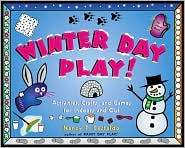 |
Winter Day Play! Nancy F. Castaldo. 2001. Nonfiction craft book. Recommended ages: Grades K-5.A chapter of this craft and activity book is devoted to Arctic adventures. It is full of easy ideas for any grade, and fun facts accompany each project. Children can simulate the aurora by scratching through black paint to reveal crayon or pastel colors beneath. They can create a yo-yo with hacky sacks (footbags) and a shoe lace, or make snow cream after a good snowfall. |
Polar Animals
 |
Animal Habitats. Judy Press. 2005. Nonfiction craft book. Recommended ages: Grades K-5.A chapter on the Arctic tundra features activities that will teach children about the animals living in this ecosystem. Students learn about camouflage by making brown snowshoe hares on brown paper and white snowshoe hares on white paper. They can make snowy owl puppets and use paint and wax paper to simulate the aurora. They can even pretend to walk around like polar bears in giant paws made of tissue boxes! |
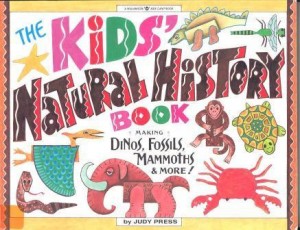 |
Kids’ Natural History Book. Judy Press. 2000. Nonfiction craft book. Recommended ages: Grades K-5.Looking for some penguin activities? Look no further! Make a penguin from two paper plates, play penguin charades, walk around the room with an egg on your feet, and hold a relay race where children carry an “egg” between their knees and try to pass it to a friend. |
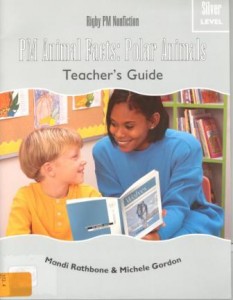 |
PM Animal Facts: Polar Animals Teacher’s Guide. Mandi Rathbone and Michele Gordon. 2000. Nonfiction book. Recommended ages: Grades K-3.This teacher’s guide focuses on books in the Rigby PM Animal Facts series, but the ideas and extensions are good for any classroom learning about polar animals. Children will learn to compare and contrast dogs and wolves, use Venn diagrams, create 3-D polar bears with curled paper, write stories about whales, make caribou fact “antlers” with tree branches, and much more. The last third of the book has reproducible worksheets for use in the classroom. |
Peoples of the Arctic
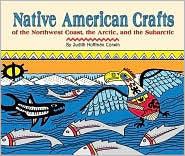 |
Native American Crafts of the Northwest Coast, the Arctic, and the Subarctic. Judith Hoffman Corwin. 2002. Nonfiction craft book. Recommended ages: Grades K-5.Explore the arts and crafts of the Netsilik, Yup’ik and other tribes of the Arctic and Subarctic. Children can carve animals out of ivory (soap), design sealskin bracelets, and make spirit masks with paper plates, feathers and traced hands. Students can also create simple Inuit stone paintings by tracing patterns provided in the book. A game, a recipe for Aleut Ice, and a variety of poems are shared at the end of the book. An excellent resource for planning festival activities! |
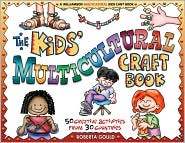 |
Kids’ Multicultural Craft Book. Roberta Gould. 2004. Nonfiction craft book. Recommended ages: Grades 3-5.This book has 35 craft ideas from around the world, but two activities featuring Tlingit and Athabascan beadwork and Inuit mitten-making would be perfect for a polar festival. Patterns are provided in the back of the book. |
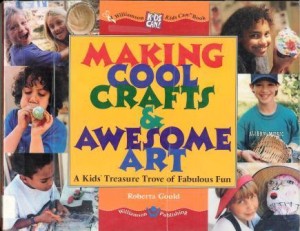 |
Making Cool Crafts and Awesome Art. Roberta Gould. 1998. Nonfiction craft book. Recommended ages: Grades 3-5.Learn how to make an Inupaq yo-yo out of fake fur, dental floss, yarn and an empty spool of thread. If your students are too young to make the yo-yo, they will still have fun learning how to use it – getting one weighted end to spin clockwise, while the other end spins the opposite way. |
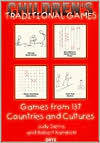 |
Children’s Traditional Games: Games From 137 Countries and Cultures. Judy Sierra. 1995. Nonfiction book. Recommended ages: Grades K-5.Try tug-of-war with a twist. An Inuit game called Ducks and Ptarmigans divides a group into “summer birthdays” and “winter birthdays.” The two teams tug at a rope over a center line. The winning team predicts if the coming winter will be cold or mild. Another game called Quaquatsewa-iu involves dropping a bundle of sticks into a hoop, seeing who can get the most sticks inside. The Yupik racing game called Uhl-ta divides children into two teams who form a circle and try to cross a finish line while keeping the circle formation. |
Children’s Literature
Polar Geography
Find more polar geography books in our “Sense of Place” virtual bookshelf.
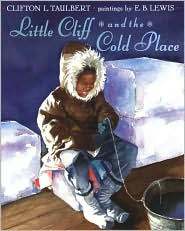 |
Little Cliff and the Cold Place. Clifton L. Taulbert. 2002. Fiction picture book. Recommended ages: Grades K-2.Little Cliff lives in Mississippi. When his teacher tells his class about a cold place up north where children fish through holes in the ice – Little Cliff wants to go there now. Cliff’s grandfather shows him a book instead, and takes him to see a friend who served in Alaska when he was in the Navy. Cliff gets to see pictures of Alaska, and even gets to try on a heavy fur coat. It turns out that Cliff doesn’t have to travel far at all to get a taste of the Arctic life! This book will tie-in well with a polar festival in a hot place. |
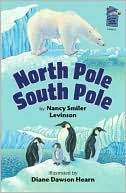 |
North Pole South Pole. Nancy Smiler Levinson. 2002. Picture book. Recommended ages: Grades K-2.Beginning readers can find a clear and concise discussion of the differences between the poles in this introduction to the geography, climate, and inhabitants of the top and the bottom of our world. |
 |
Life on the Ice. Susan E. Goodman. 2006. Picture book. Recommended ages: Grades 3-5.The photographs in this book take readers on a tour of the world’s ice landscapes, primarily Antarctica. The author discusses the nature of the extreme climate, the planes that fly there, the scientists who study it, and what it takes to live in this environment. |
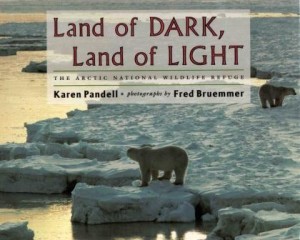 |
Land of Dark, Land of Light: The Arctic National Wildlife Refuge. Karen Pandell. 1993. Picture book. Recommended ages: Grades K-2.Color photos show the eerie beauty of the Arctic wilderness and its inhabitants. The spare, lyrical text and the appendix, which details the habits of the animals depicted, make the book suitable for primary grades. Excellent word choice could provide an opportunity for teachers to introduce new vocabulary during a read-aloud. |
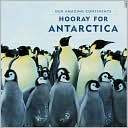 |
Our Amazing Continents: Hooray for Antarctica! April Pulley Sayre. 2003. Picture book. Recommended ages: Grades K-2.This book uses photographs to introduce the continent of Antarctica by looking at its geography, plant and animal life, weather, and settlement by humans. While the simple, concise main ideas make the book appealing to primary graders, the additional detail found on most pages makes it appropriate for students in upper elementary as well. |
Seasons, Weather, and Climate
Find more seasons, weather, and climate books in our “Polar Patterns: Day, Night, and Seasons” and “Weather and Climate: From Home to the Poles” virtual bookshelves.
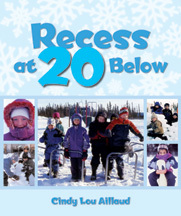 |
Recess at 20 Below. Cindy Lou Aillaud. 2005. Nonfiction book. Recommended ages: Grades K-5.In Delta Junction, Alaska, it is recess (and school) as usual at 20 below zero. Join real students as they trudge to school in the dark, bundle up for snowy fun, and share what it is like to live in a cold and beautiful place. Written and photographed by an Alaskan educator, this book will intrigue students and adults alike. |
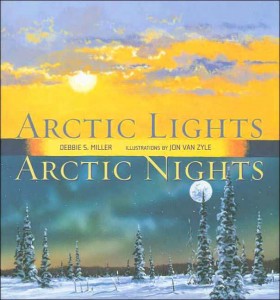 |
Arctic Lights, Arctic Nights. Debbie Miller. 2003. Nonfiction book. Recommended ages: Grades K-5.This book takes readers month-by-month through a typical year in the Arctic, exploring seasonal changes in daylight and the environment. Please see “Hands-on Science Activities for Your Polar Festival” for a link to a companion lesson plan from the National Science Teachers Association. |
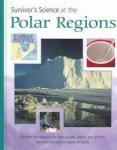 |
Survivor’s Science at the Polar Regions. Peter D. Riley. 2005. Nonfiction book. Recommended ages: Grades 3-5.This book compares and contrasts the polar regions in terms of weather; clothes you would need to wear; plants and animals; ice, water, and snow; traveling in these regions; and seasons. Each topic includes a hands-on activity suitable for use in a classroom or as at-home enrichment. The book includes a glossary and an index. |
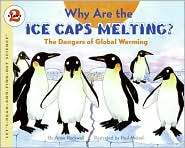 |
Why Are the Ice Caps Melting? The Dangers of Global Warming. Anne Rockwell. 2006. Nonfiction book. Recommended ages: Grades 2-5.This book explains the science behind global warming and provides local examples to help students understand this complex subject. While the book emphasizes the serious nature of global warming, it does focus on simple actions students can do to promote change. A read-aloud for younger grades and independent reading for older students. |
Glaciers, Ice, and Snow
Find more glaciers, ice, and snow books in our “Water, Ice, and Snow” virtual bookshelf.
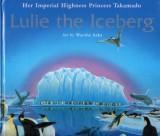 |
Lulie the Iceberg. Takamado no Miya Hisako. 1998. Picture book (Fiction) and Audio. Recommended ages: Grades K-5.This tale of Lulie, an iceberg that journeys from the Arctic to the Antarctic, was written by Princess Hisako Takamado of Japan, assisted by Icebridge, a forum of scientists and educators dedicated to promoting knowledge about the polar regions and the oceans. While the story ascribes human attributes to ice, wind, and animals, it also blends accurate scientific information about ocean currents and the species and conditions found at various latitudes. Illustrations are by Warabe Aska. |
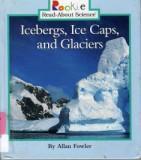 |
Icebergs, Ice Caps, and Glaciers. Allan Fowler. 1997. Nonfiction book. Recommended ages: Grades K-2.Extremely simple text and bright color photographs make this book appealing to young learners. The author combines facts about icebergs, ice caps and glaciers into a concise introductory book. A glossary with pictures helps students master new vocabulary. |
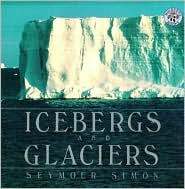 |
Icebergs and Glaciers. Seymour Simon. 1999. Nonfiction book. Recommended ages: Grades 3-5.Breathtaking photographs mark this introduction to a frozen world of mountaintops and polar regions. |
Aurora
Find more aurora books in our “Polar Patterns: Day, Night, and Seasons” virtual bookshelf.
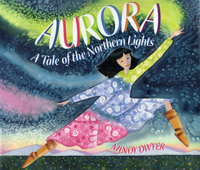 |
Aurora: A Tale of the Northern Lights. Mindy Dwyer. 1997. Picture book. Recommended ages: Grades: K-3.A fictional tale of a young girl named Aurora who travels to find a land of darkness and understand her grandmother’s mysterious story. As she travels, she collects the various colors of daylight. When she reaches the land of darkness, she scatters the colors, creating the northern lights. Rich vocabulary makes this story perfect for introducing descriptive writing to young students. |
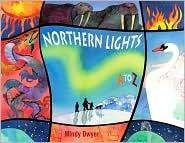 |
Northern Lights: A to Z. Mindy Dwyer. 2007. Picture book. Recommended ages: Grades K-3.The book’s 26 facts and legends – one for each letter of the alphabet – explain both the science behind the aurora (solar winds hitting the earth’s magnetic fields) and the legends it has inspired, such as the fascinating Makah Indian myth that pots of boiling whale blubber created it. |
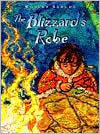 |
The Blizzard’s Robe. Robert Sabuda. 1999. Picture book. Recommended ages: Grades K-3.A fictional story of a young girl whose kindness toward Blizzard earns her people his greatest gift: the northern lights. Colorful batik illustrations evoke traditional folk art and complement the poetic text. |
Polar Animals
Find penguin and polar bear books in each month’s virtual bookshelf.
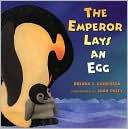 |
The Emperor Lays an Egg. Brenda Z. Guiberson. 2001. Picture book. Recommended ages: Grades K-2.Collages from hand-painted paper provide the backdrop to informational text about the extreme conditions in which emperor penguins live and reproduce. In addition to providing rich content, the book could be used as the springboard for an art activity. After reading the book, students could research and paint a polar animal of their choice. |
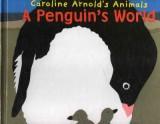 |
A Penguin’s World. Caroline Arnold. 2006. Nonfiction picture book. Recommended ages: Grades K-2.Cut-paper illustrations encourage children to read on and discover more about Adelie penguins. Suitable for student research or for a collage art project. |
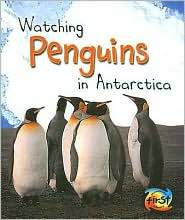 |
Watching Penguins in Antarctica. Louise and Richard Spilsbury. 2006. Nonfiction book. Recommended ages: Grades 2-4.Follow emperor penguins as they gather in rookeries, toboggan over the ice and hunt in the ocean. Color photographs accompany the straightforward text. Boldfaced words and a glossary help students learn about behaviors such as preening. After reading, students could observe the birds in a zoo or a video and watch for examples of the described behaviors. |
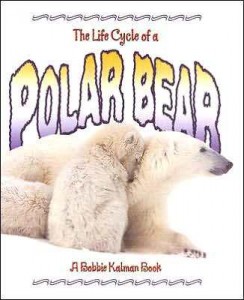 |
Life Cycle of a Polar Bear. Rebecca Sjonger and Bobbie Kalman. 2006. Nonfiction book. Recommended ages: Grades 3-5.This book describes polar bears, their habitat, and their life cycle as well as the threats of melting ice caps, pollution, and human settlement. This book would fit well with a unit on mammals, life cycles, or the polar regions. |
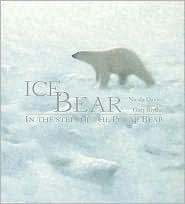 |
Ice Bear: In the Steps of the Polar Bear. Nicola Davies. 2005. Picture book. Recommended ages: Grades K-5.Oil paintings accompany simple text that describes polar bears and their adaptations – small ears close to their heads and out of the wind, fur coats four fingers thick, adults weighing more than two lions. The book’s size makes it perfect for sharing with a group. In addition to developing science knowledge, the book could be a springboard for an art project in watercolor or in oil pastels. |
Peoples of the Arctic
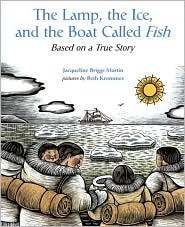 |
The Lamp, the Ice and the Boat Called Fish. Jacqueline Briggs Martin. 2001. Nonfiction picture book. Recommended ages: Grades 4-5.Scratchboard art illustrates this account of the voyage of the Karluk, a ship carrying scientists of the Canadian Arctic Expedition in 1913. An Inupiaq family sailed with the scientists until the ship became icebound and eventually sank. Because of their familiarity with the world of ice and snow, members of the Inupiaq family hunted for food and made clothing for the crew. For eight months they led the scientists over the ice to the solid land of Wrangel Island. A pronunciation key helps with Inupiaq names and terms. Photographs from the actual expedition are shown on the last page. |
Poetry
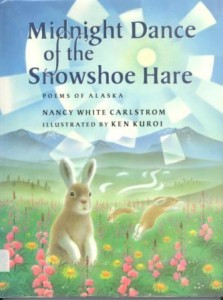 |
Midnight Dance of the Snowshoe Hare: Poems of Alaska. Nancy White Carlstrom. 1998. Poetry book. Recommended ages: Grades 2-5.A collection of poetry focusing on the long summer days in the Arctic when the sun barely sets. Rabbits turn from white to brown, poppies burst from the ground, ice melts and rivers of water rush through the hills. This is not the freezing, desolate wasteland of winter. |
 |
Polar Bear, Arctic Hare: Poems of the Frozen North. Eileen Spinelli. 2007. Poetry book. Recommended ages: Grades K-5.Acrylic paintings accompany short poems that introduce a variety of Arctic animals. From snow fleas to narwhals and musk ox and bees – rhymes tell us their stories. Facts about each animal are presented at the end of the book. This collection is sure to please children of all ages. |
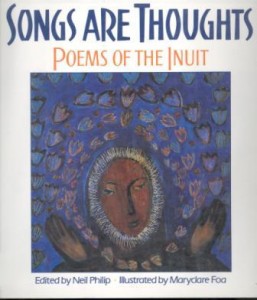 |
Songs are Thoughts: Poems of the Inuit. Neil Philip, ed. 1995. Poetry book. Recommended ages: Grades K-5.Songs and poems of some Inuit artists are translated into English and accompanied by simple oil paintings. Some are humorous, like the poem about a lazy man who is hungry but does not want to hunt. Some are reflections on daily life – a mother inside a quiet house during a blizzard. Many are about hunting. What sort of poems can your students write about their lives? |
This article was written by Kate Hastings and Jessica Fries-Gaither. For more information, see the Contributors page. Email Kimberly Lightle, Principal Investigator, with any questions about the content of this site.
Copyright November 2008 – The Ohio State University. This material is based upon work supported by the National Science Foundation under Grant No. 0733024. Any opinions, findings, and conclusions or recommendations expressed in this material are those of the author(s) and do not necessarily reflect the views of the National Science Foundation. This work is licensed under an Attribution-ShareAlike 3.0 Unported Creative Commons license.

































